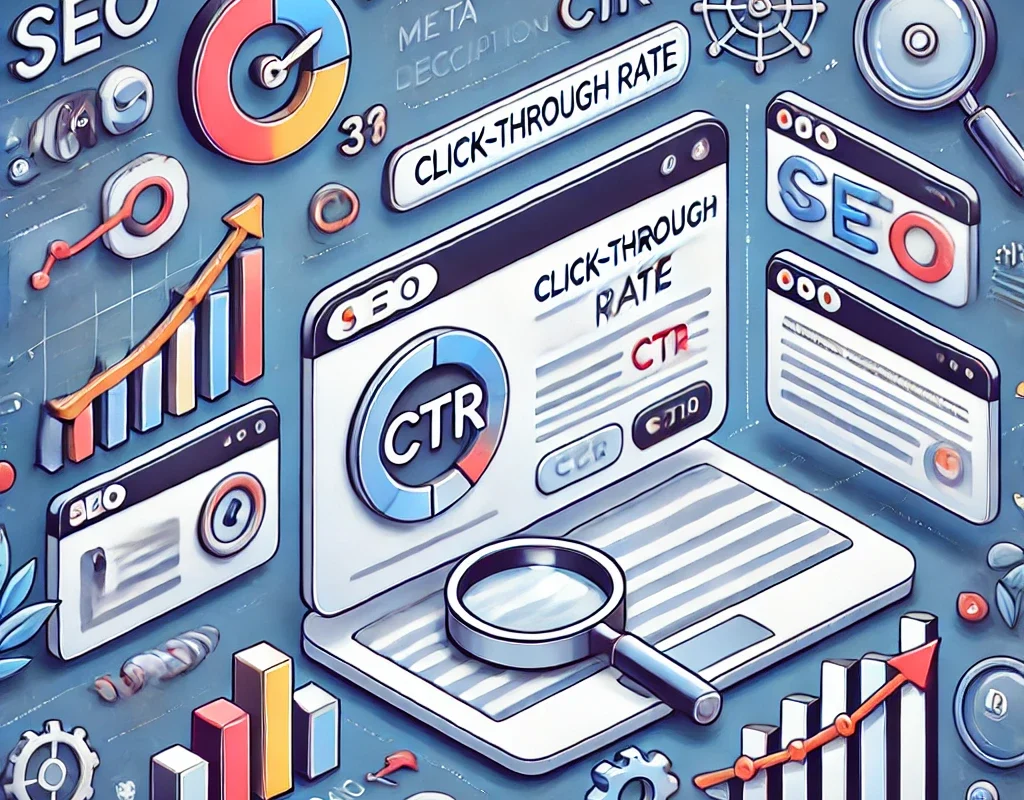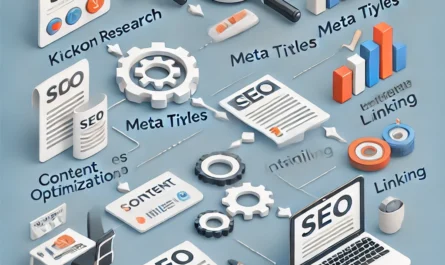Click-Through Rate (CTR) is one of the most critical metrics for measuring online success. A higher CTR means more users are clicking on your website, leading to increased traffic, engagement, and conversions. However, understanding how to improve your click-through rate (CTR) with SEO best practices can be challenging. SEO plays a vital role in ensuring that your web pages not only rank well but also capture users’ attention enough to click. By employing specific techniques that target user intent and search engine optimization, you can dramatically increase your website’s CTR and boost your rankings.
CTR isn’t just about optimizing for search engines—it’s about optimizing for users. Therefore, you need to focus on creating content that engages, informs, and invites people to click. This article will explore how you can improve your CTR by using SEO best practices, helping you drive more traffic and conversions.
What is Click-Through Rate (CTR)?
CTR is a metric that measures how often people click on a specific link compared to how often they see it (impressions). It’s calculated by dividing the number of clicks by the number of impressions and multiplying by 100 to get a percentage. For instance, if a webpage receives 1,000 impressions and 100 clicks, its CTR would be 10%.
CTR is a crucial indicator of how effective your title tags, meta descriptions, and content are in attracting clicks. A higher CTR means users find your listing in the search engine results page (SERP) compelling enough to visit your site. While CTR doesn’t directly affect your ranking, it is a significant factor in user engagement, which indirectly impacts SEO performance.
Why is CTR Important in SEO?
When you improve your CTR, you tell search engines like Google that your content is relevant and engaging to users. Search engines prioritize pages that not only rank well but also attract users’ attention. A high CTR indicates that users are interested in what your page offers, which can lead to better rankings over time. Conversely, if your page ranks high but receives a low CTR, search engines may assume the content isn’t meeting user expectations.
CTR is important because it impacts various SEO metrics, including:
- Organic traffic: Higher CTR means more clicks, leading to an increase in organic traffic.
- Bounce rate: By improving CTR, you can reduce bounce rates as users are more likely to find the content relevant to their queries.
- Conversion rate: When users find what they are looking for, they are more likely to convert, be it a sign-up, purchase, or another action.
The Relationship Between CTR and Organic Search Traffic
Organic search traffic is the lifeblood of many websites, and CTR is a driving factor in this traffic. Optimizing for CTR means making your content, title tags, and meta descriptions irresistible to users. If your web page is receiving a significant amount of impressions but has a low CTR, it suggests that users are not finding your listing compelling enough to click on.
By improving the elements that influence CTR, such as meta titles, descriptions, and content relevance, you can turn impressions into valuable clicks, thus increasing organic search traffic. SEO professionals emphasize the importance of appealing to user intent, which can be achieved by understanding what users are searching for and offering a solution that stands out in the SERPs.
How to Calculate CTR
Calculating CTR is straightforward. Use the following formula:
CTR = (Clicks / Impressions) × 100
For example, if your webpage gets 5,000 impressions and 200 clicks, the CTR would be:
CTR = (200 / 5,000) × 100 = 4%
In this case, a 4% CTR means that out of 5,000 people who saw your webpage listed, 200 clicked through to visit it. This metric helps you measure the effectiveness of your SEO efforts, particularly the elements that appear in the search results like titles and meta descriptions.
How User Behavior Affects CTR
User behavior plays a pivotal role in determining your CTR. Understanding why users click on certain links and ignore others can help you craft more engaging content. Various factors influence user behavior, including:
- Relevance: Does the content match the user’s search query?
- Trustworthiness: Is the domain authoritative, and does it appear credible?
- Visuals: Does the snippet include images, videos, or schema markup that enhances its visual appeal?
- Position: Higher-ranking pages generally receive more clicks, but even lower-ranked pages with enticing titles and descriptions can capture attention.
By analyzing user behavior through tools like Google Analytics or Search Console, you can determine which pages have a high impression count but low CTR, allowing you to optimize accordingly.
How to Improve Your Click-Through Rate (CTR) with SEO Best Practices
Improving your click-through rate (CTR) with SEO best practices involves several steps that focus on user experience and search engine optimization. First and foremost, crafting compelling meta titles and descriptions is essential. These are the first things users see in search results, and they must entice the user to click.
Moreover, optimizing content by using relevant keywords, structured data, and ensuring mobile-friendliness can enhance the likelihood of higher CTR. Let’s dive deeper into the core SEO strategies that will elevate your CTR.
The Role of Meta Titles and Descriptions in CTR
Meta titles and descriptions are the first pieces of information users see in the search engine results. If your title is compelling and your description provides a clear idea of what users will find on the page, you increase the chances of them clicking through. Think of these elements as your opportunity to “sell” the page to the user before they even land on it.
Optimizing Titles for Higher CTR
The title tag is arguably the most crucial factor influencing CTR. A well-optimized title is concise, informative, and includes the primary keyword while also piquing the user’s curiosity. Best practices include:
- Limiting the title length to 50-60 characters to avoid truncation in search results.
- Incorporating power words like “ultimate,” “free,” or “guide” to create urgency.
- Using action-oriented phrases like “learn,” “discover,” or “unlock” to prompt user action.
Power Words That Boost CTR
Certain words trigger an emotional response, making them more likely to catch users’ attention. Power words like “exclusive,” “proven,” or “limited time” can create a sense of urgency or exclusivity. When incorporated into your meta titles and descriptions, these words can make users more likely to click through to your site.
You can also read; How to Use Social Media Marketing to Drive Website Traffic
The Importance of Headings in CTR
Using proper headings (H1, H2, etc.) not only organizes your content but also improves readability, which can directly impact CTR. Search engines use headings to understand the structure of your page, and users appreciate clear, well-structured content that’s easy to navigate.



